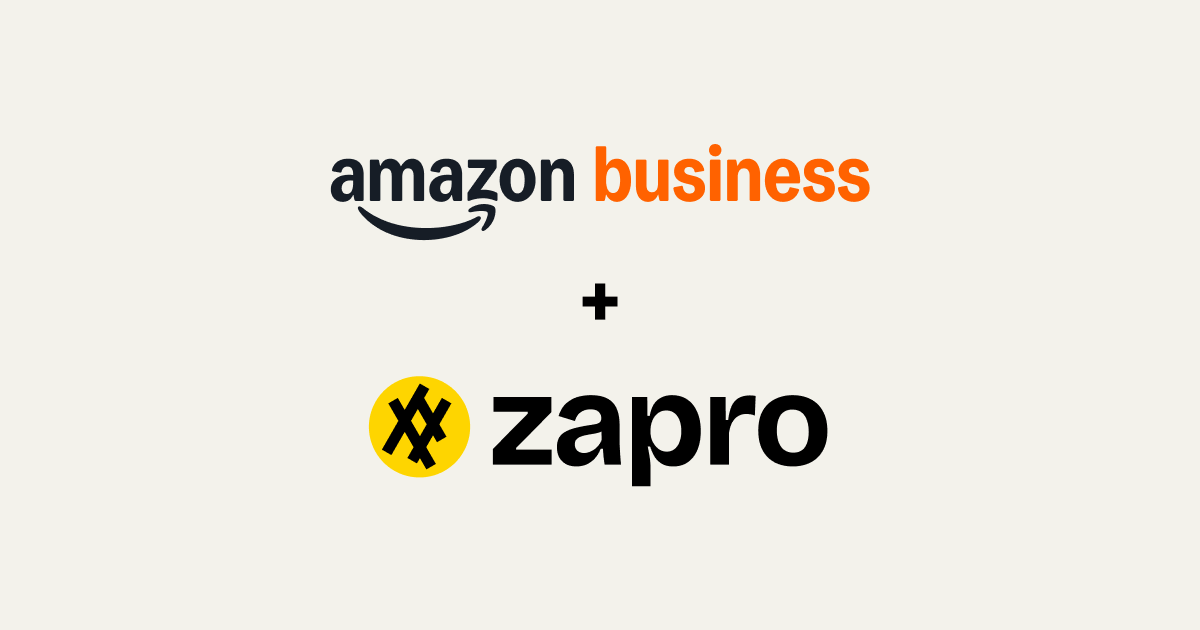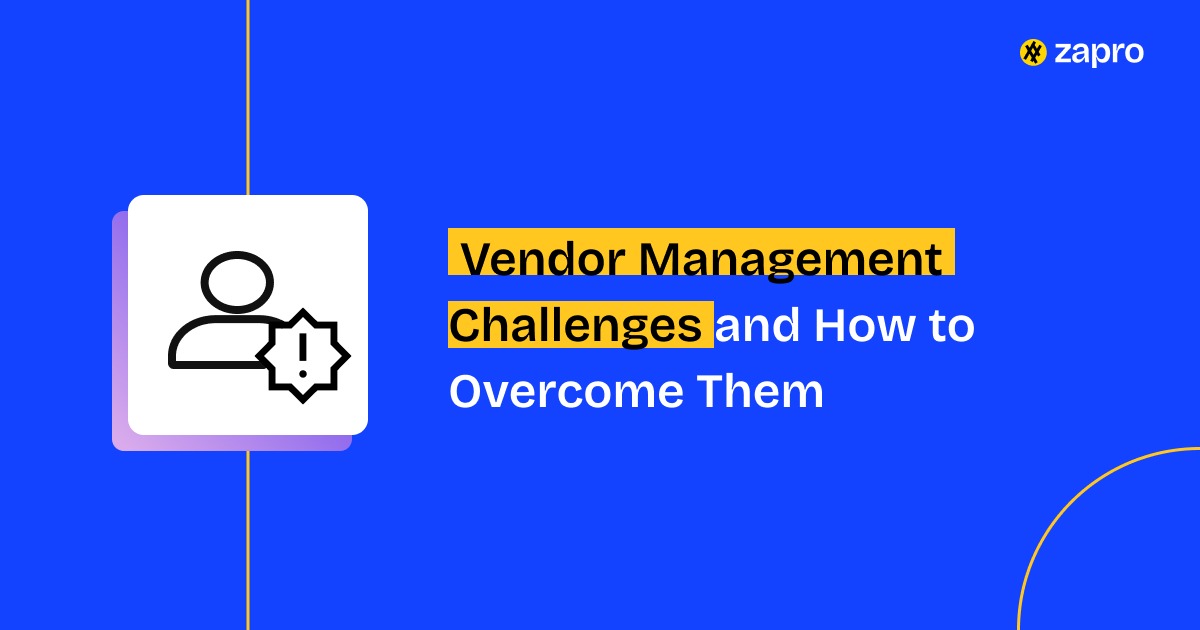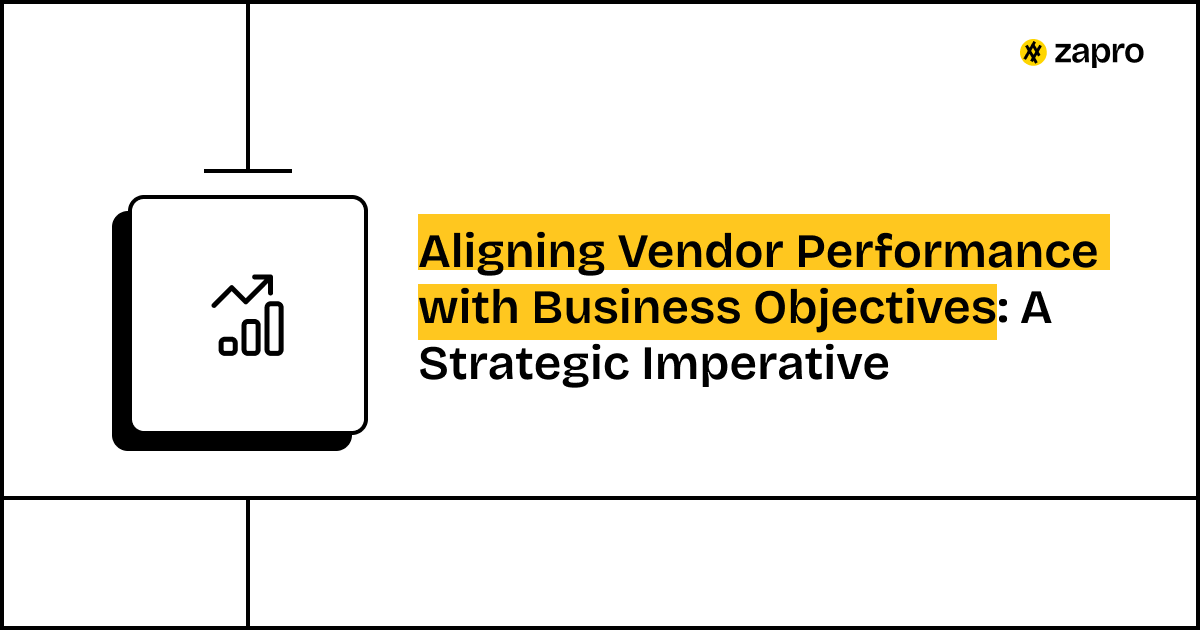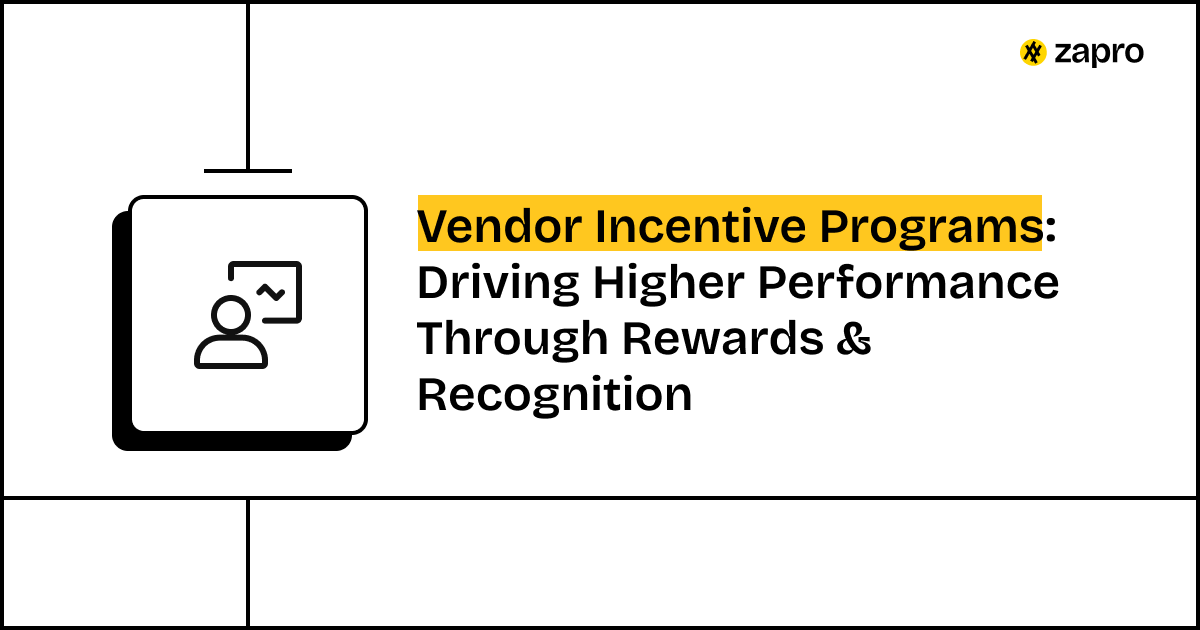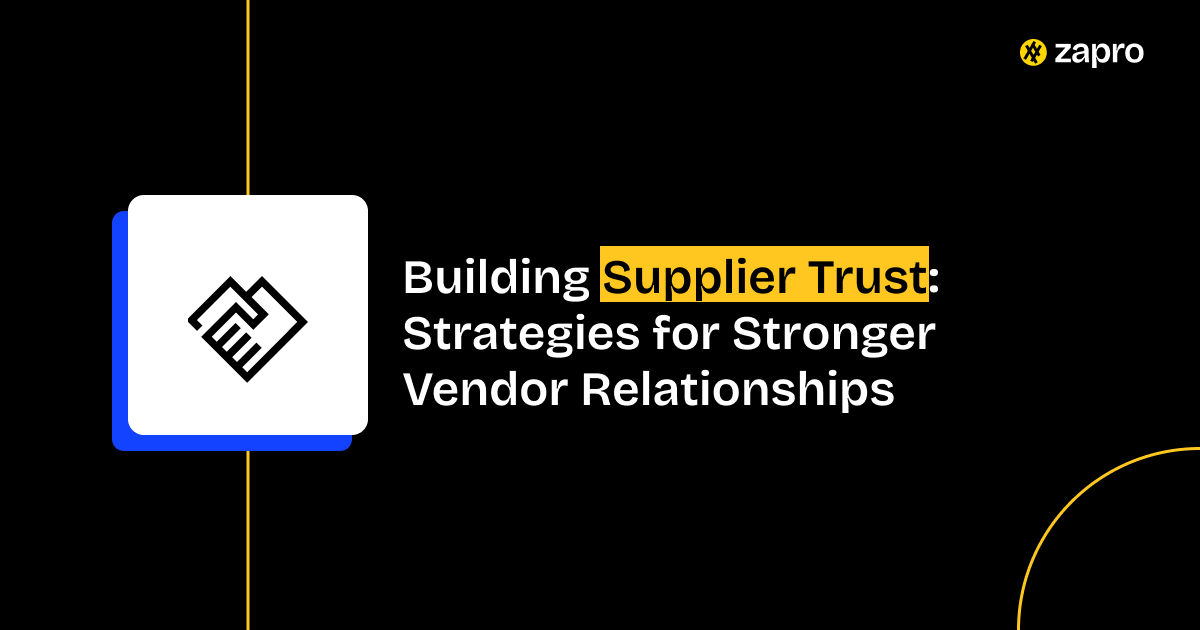The practice of vendor management involves monitoring all business interactions with suppliers and partners and service providers. A well-executed vendor management system extends past basic contracts and financial documents to guarantee vendors actively help organizations achieve their objectives.
The position of vendors as supply chain foundation makes vendor management essential for businesses. The proper management of vendors enables organizations to handle expenses and minimize potential threats and maintain adherence to changing regulatory standards. The practice enhances business stability when operating in an unstable worldwide market environment.
Most vendor relationships present complex challenges to manage. The combination of scattered data and non-standard compliance procedures and process irregularities creates expensive operational interruptions.
This blog examines typical vendor management obstacles and demonstrates effective solutions and optimal methods for developing better supplier alliances.
What is vendor management and why it matters
The process of vendor management involves choosing suppliers and service providers and keeping track of their performance and maintaining their business connections. The primary objective of vendor management exists to guarantee vendors provide reliable value through their quality standards, cost efficiency, and regulatory compliance.
Vendor management evolved from basic transactional work into a strategic business operation which companies now use to enhance their supply chains and minimize risks and boost operational efficiency.
Key benefits of vendor management
- Better spend control enables businesses to decrease their expenses.
- The process of vendor management helps organizations decrease their exposure to risks through performance tracking and compliance verification.
- The combination of optimized operations and enhanced teamwork results from vendor management that streamlines business processes.
Effective vendor management protects business operations while generating enduring organizational value.
Top Vendor Management Challenges (and How to Overcome Them)
The management of vendors remains essential yet organizations encounter multiple recurring problems during this process. The following section outlines major business challenges in vendor management together with specific solutions to address these problems.
1. Lack of visibility and transparency
Challenge:
Organizations face difficulties when their vendor information exists in multiple locations including spreadsheets and emails and separate systems. The lack of visibility into vendor performance and contract compliance and spend tracking creates significant challenges for organizations. The lack of transparency leads to unidentified expenses and duplicate vendor relationships and prevents businesses from achieving maximum cost savings.
Solution:
A centralized dashboard system combined with spend analytics tools consolidates all vendor information into one unified platform. The combination of reporting tools enables procurement teams to monitor spending activities and evaluate vendor performance and detect potential risks through real-time data. The availability of transparent information enables organizations to make decisions through factual evidence instead of depending on speculative assumptions.
2. Vendor risk and compliance issues
Challenge:
The operations of vendors span multiple geographic areas which have their own regulatory frameworks. The combination of ESG standards and supply chain interruptions makes compliance management extremely complicated. A single non-compliance issue will trigger financial penalties and disrupt supply chains and damage corporate reputation.
Solution:
The combination of automated compliance monitoring systems with automated supplier assessment tools enables better oversight of vendors. The process of scheduled audits together with risk evaluation procedures helps vendors maintain both regulatory compliance and company policy adherence. The integration of compliance procedures during vendor onboarding and continuous monitoring activities decreases the likelihood of unexpected problems during the process.
3. Vendor reputation and quality risks
Challenge:
The selection of an inappropriate vendor results in poor quality products and delayed deliveries and substandard service performance. The quality of service and delivery times from vendors directly impact how satisfied customers are and how well their brand reputation stands.
Solution:
Businesses need to implement performance scorecards and customer feedback systems and conduct regular quality assessments to ensure vendor quality. The process of ongoing monitoring enables organizations to detect minor problems which prevent them from developing into significant operational interruptions. The process of continuous monitoring helps organizations develop a stable network of dependable vendors.
4. Manual vendor management processes
Challenge:
The use of spreadsheets and email for vendor management creates operational problems which result in missed deadlines and poor coordination and inefficient processes. The process of expanding vendor operations becomes challenging when the business expands because of current manual systems.
Solution:
Vendor management software performs three essential functions by streamlining vendor onboarding and performance evaluation and automated reporting processes. The integration of workflows between procurement and finance and compliance teams through a single system minimizes mistakes while accelerating all business operations.
5. Vendor payment and financial risks
Challenge:
The main financial challenges organizations face include delayed payments and duplicate invoices and fraudulent activities. The combination of strained supplier relationships and financial losses becomes a direct result of these issues.
Solution:
Digital payment systems with built-in security features and automated approval processes and fraud detection tools enhance financial operations. The implementation of fast and accurate payment systems helps suppliers trust the business more while minimizing payment disagreements.
6. Ineffective vendor collaboration and communication
Challenge:
The combination of unaligned expectations and insufficient communication and delayed feedback results in subpar vendor performance. The absence of strong collaboration between organizations prevents vendors from achieving complete alignment with business objectives.
Solution:
Supplier portals function as centralized communication platforms which enable organizations to exchange updates and monitor performance and solve problems efficiently. The combination of scheduled review meetings and performance-based KPIs helps maintain mutual accountability between parties while ensuring their goals stay in sync.
7. Vendor dependency and over-reliance
Challenge:
The practice of depending too much on one vendor creates significant business risks. Major business disruptions will occur when a vendor fails because of financial instability or operational breakdowns or geopolitical events.
Solution:
The implementation of multiple vendors and backup plans and dual supplier strategies helps organizations decrease their dependence on single suppliers. The implementation of this strategy maintains business operations when any single vendor fails to meet expectations.
8. Data security and privacy concerns
Challenge:
The management of sensitive information including contracts and financial documents and customer data falls under vendor responsibility. Organizations face security breaches and financial penalties and non-compliance issues when their vendors maintain inadequate data protection systems.
Solution:
Organizations must perform security evaluations of vendors and implement data encryption and follow cybersecurity standards such as ISO 27001 and GDPR to protect their information. The implementation of secure access controls enables authorized personnel to handle sensitive information.
Simplify Complex Vendor Management Challenges Today

Best practices to overcome vendor management challenges
A systematic method should be used to handle vendor-related problems. Organizations can develop better vendor connections and supply chain stability through these established best practices.
1. Create specific evaluation standards
Organizations need to create specific evaluation standards for vendor selection and assessment.
The selection of appropriate vendors at the beginning stage helps organizations avoid various subsequent problems. Businesses need to create evaluation criteria which extend past price considerations to include quality standards and financial stability and compliance records and organizational value compatibility. Standardized scorecards help organizations make decisions that remain both objective and consistent.
2. Assess vendor performance at scheduled intervals
The process of vendor performance assessment should occur at scheduled intervals.
Vendor performance levels evolve throughout different periods of time. The implementation of KPIs for on-time delivery and quality scores and responsiveness enables organizations to detect potential problems before they become major issues. The process of performance feedback enables vendors to enhance their operations and develop new solutions.
3. Automate vendor management operations
The implementation of vendor management software enables automation of business operations.
The implementation of manual vendor management systems leads to delayed operations and elevated business risks. The software system streamlines vendor onboarding and performance evaluation and compliance verification operations. The system enables procurement and finance and compliance teams to work together through integrated workflows which results in time savings and decreased errors.
4. Build robust supplier relationships
The development of robust supplier relationships depends on building strong connections and maintaining complete openness between parties.
Vendor management depends on trust together with open communication to function effectively. The combination of transparent contracts with open feedback systems and scheduled meetings leads to better team collaboration. Suppliers who feel like partners will actively contribute solutions and risks and support innovation initiatives.
5. Integrate risk management into vendor strategy
Risk management needs to become an integral part of vendor strategy development.
The process of vendor management needs to include risk assessment at all times. The assessment of vendor risks includes three main areas which are financial stability and compliance compliance and operational system weaknesses. The integration of risk assessments during vendor selection and ongoing monitoring and renewal procedures helps organizations detect potential threats before they become major issues.
Role of technology in solving vendor management challenges
The implementation of technology solutions helps organizations overcome their vendor management problems.
The current vendor management software platforms resolve multiple operational barriers which affect business performance. The system provides several key benefits to organizations through its implementation.
a) See everything in one place
The system unifies all vendor information including contracts and spend data and vendor records within a single platform which prevents data loss from spreadsheet and email systems.
b) Cut the manual work
The system automates vendor onboarding processes and performs compliance checks and approval procedures which results in time savings and fewer errors.
c) Stay ahead of risks
The system includes built-in monitoring features and alert systems and audit trails which help organizations maintain vendor compliance and detect potential risks at an early stage.
d) Track performance in real time
Real-time dashboards and analytical tools enable users to detect performance declines and perform vendor comparisons which helps them respond to issues before they become major problems.
e) Keep communication clear
The combination of supplier portals with collaboration tools enables organizations to establish one platform for updating information and receiving feedback which speeds up decision-making processes.
f) Make payments smooth and secure
Digital workflows help organizations achieve dispute reduction and prevent fraud while ensuring timely vendor payments which leads to better supplier relationships.
The implementation of technology transforms vendor management operations into an efficient proactive system that develops superior supplier relationships.
Turning challenges into opportunities with Zapro
Most vendor management systems perform transaction processing functions. Zapro stands out from other systems because it provides more than transaction management capabilities to businesses.
Zapro functions as a complete AI-powered vendor management system which extends its capabilities beyond basic tracking functions. The system addresses typical problems found in conventional methods through its functionality.
Key capabilities of Zapro
- Real-time monitoring
The system provides complete real-time monitoring of contracts and spend and supplier performance data to eliminate hidden information. - Automated processes
The system performs vendor onboarding and compliance verification and approval tasks automatically which enables teams to concentrate on strategic planning. - Risk protection
The system protects against risks through its combination of continuous monitoring and AI-based insights and built-in audit trail functionality. - Stronger supplier relationships
The platform enables better supplier relationships through its combination of supplier portals and collaboration tools and open communication channels. - Secure financial operations
The system enables secure automated financial operations which minimize payment disputes and reduce delays in payment processing.
Zapro transforms vendor management into an activity which delivers operational efficiency, business resilience, and long-term value generation. Organizations seeking to overcome spreadsheet and legacy system limitations should choose Zapro as their complete solution to develop superior supplier partnerships for the future.
Ready to take control of your vendor relationships?
Discover how Zapro can simplify, automate, and elevate your entire vendor management process.

Start Smarter with Zapro
Automate onboarding, track risks instantly, and stay ahead of compliance—all in one platform.
Don’t miss our weekly updates
We’ll email you 1-3 times per week—and never share your information.
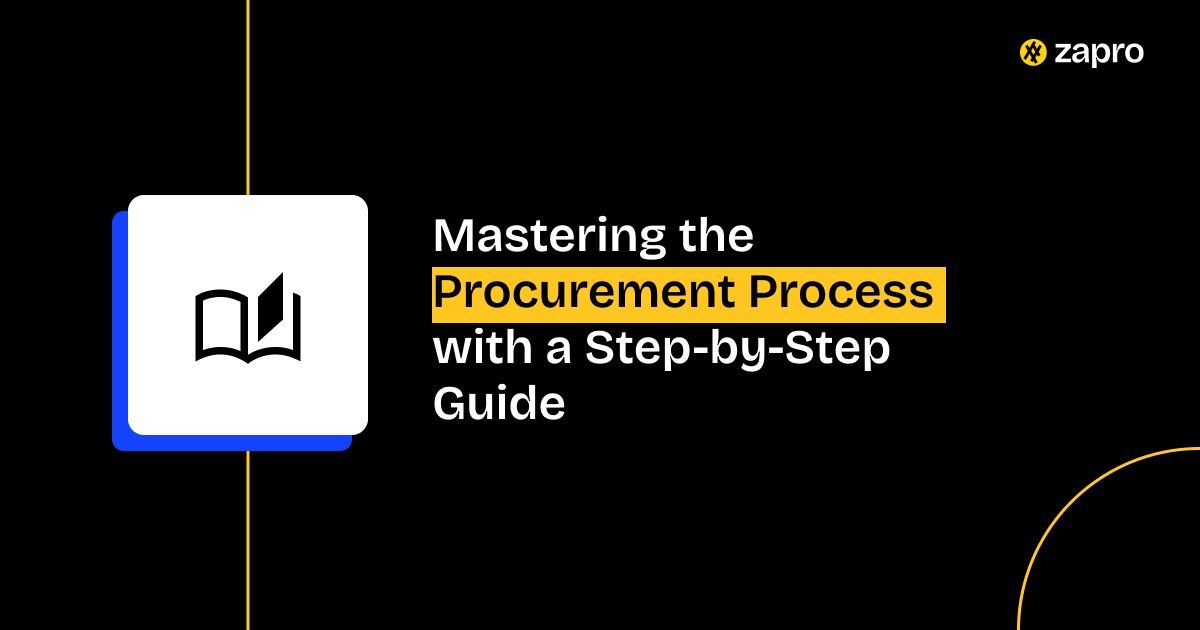
 Healthcare
Healthcare Financial Services
Financial Services Technology
Technology Venture Capitalist
Venture Capitalist Chief Procurement Officer
Chief Procurement Officer Chief Financial Officer
Chief Financial Officer